Men have dominated high-jewellery design for centuries, but no longer. Female creatives have now risen to the uppermost echelons of the world’s elite houses, bringing with them an unprecedented approach both technically and philosophically. They are creating the jewellery of the future—thinking of new ways to wear pieces, working with innovative new materials, and going above and beyond the DNA of their houses while still incorporating those time-tested codes. Due in part to the massive investment required to make high jewellery, the category has rarely seen innovation until now. New technologies, forward-thinking minds, and a changing cultural landscape are allowing for a new era in the category. Meet the personalities upending the industry.

Boucheron: Claire Choisne
A tall, soft-spoken, and ethereal figure in a black column gown, Claire Choisne personally greeted guests as they entered a softly lit space within Boucheron’s Place Vendôme headquarters in June. They were there to take in the Parisian house’s latest head-spinning array of futuristic jewellery for its Carte Blanche collection as Choisne, the creative director behind the avant-garde pieces, detailed how they were made, gently explaining their extreme technicality. Her designs are so complex, she started a team dedicated solely to innovation research in 2018. “At the beginning, I was scared that people wouldn’t understand,” says Choisne. “And year after year, I understood: A woman who buys a nice couture dress with something creative doesn’t want something boring. She can be open to something more interesting.”
“Interesting” is putting it mildly; the room was filled with wearable art. Palladium-finished aluminium epaulets crafted like waves crashing over shoulders (pictured on previous pages), a nearly five-foot-long diamond-drop necklace evoking ice formations (far right), and a collar necklace fashioned from rock-crystal discs adorned with 4,542 diamonds that glittered like ripples of water were just a few of the masterpieces on display.
If that sounds cool, it’s just a taste of what Choisne has been whipping up lately at the 166-year-old jewellery house. Unrivalled in her inventiveness—a sort of mad scientist of high jewellery—she has created necklaces made with holographic coatings more typically seen on aviation-runway lights as well as with Aerogel, a material used by NASA to capture stardust.
It’s a far cry from the usual fare of established high-jewellery houses, and, as a result, her designs are fast becoming the most talked-about during couture week in Paris, when the maisons present their collections. Choisne is quick to credit her boss for giving her free rein. “I always push for creativity, but some people at Boucheron wanted more commercial [pieces],” says Choisne. “So, Hélène [Poulit-Duquesne, the CEO] had the idea to create Carte Blanche for July and, in January, a collection that would always be inspired by the archives.”
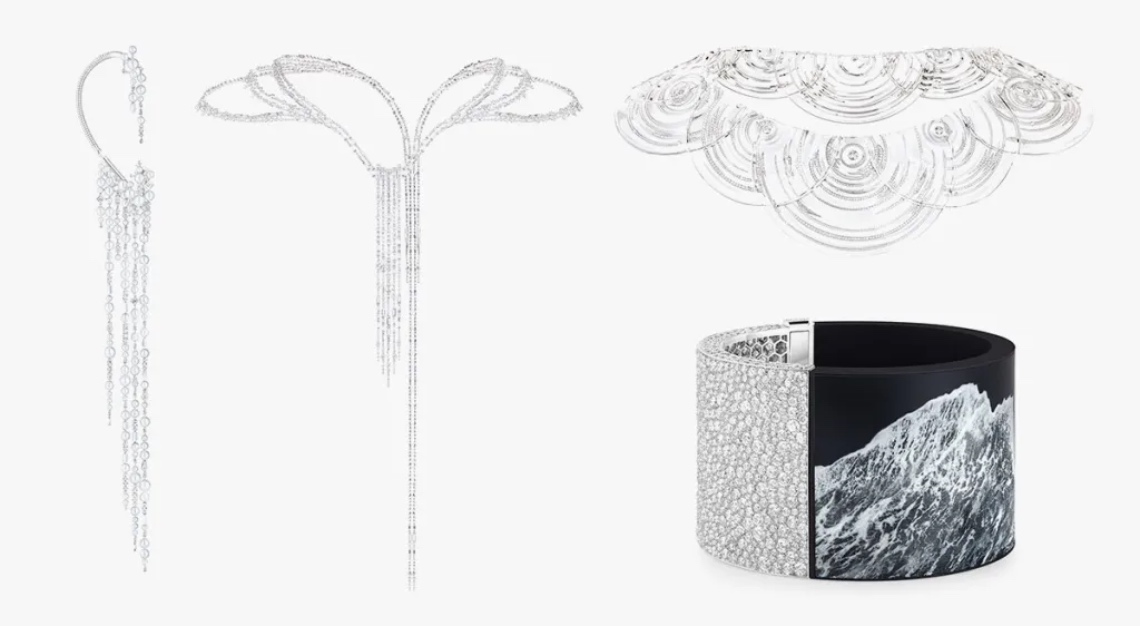
Carte Blanche translates to Blank Slate, which could be read as a reference to Choisne’s unorthodox approach. She grew up in the South of France in a family that didn’t care about jewellery. By the time she graduated the Rue du Louvre jewellery college, she was as interested in technique as in design. At 24 years old, she went to work for independent Parisian jeweller Lorenz Bäumer. “It was quite crazy, because at the beginning I was alone creating pieces for Chanel [under Bäumer], which I did for eight years,” Choisne says. He later enlisted her to help him design jewellery for Louis Vuitton for four years, and they also collaborated on fragrance projects. “It was really good training to create Chanel in the morning, perfume in the afternoon, and so on,” she says. “I was in charge of the studio, the technical parts, and buying the stones—almost everything.”
It’s that level of experience that has given her the know-how to turn her unprecedented designs into reality. The Ondes necklace (below left) alone took more than 5,000 hours to produce. And yet she works on four to five collections at a time, which means she’s designing four to five years ahead. But given how outrageously forward-thinking her pieces always feel when released, she’s probably much further along in her head.
Her latest mic drop? The Quatre 5D Memory ring, revealed in September in New York at a celebration for Boucheron’s new Madison Avenue boutique, uses 5D optical data storage—a nascent technology developed by Peter Kazansky, a professor at the University of Southampton and chief science officer at SPhotonix—that theoretically can preserve vast amounts of data for billions of years in a tiny space made of nanostructured glass. Choisne collaborated with the French Institute for Research and Coordination in Acoustics/Music to use 5D memory crystal to encode a musical composition into the white-gold, diamond, and silica-glass ring. “It’s not for everybody,” she concedes. “It’s not the little black dress, you know? You already have the little black dress, and you need something else.”
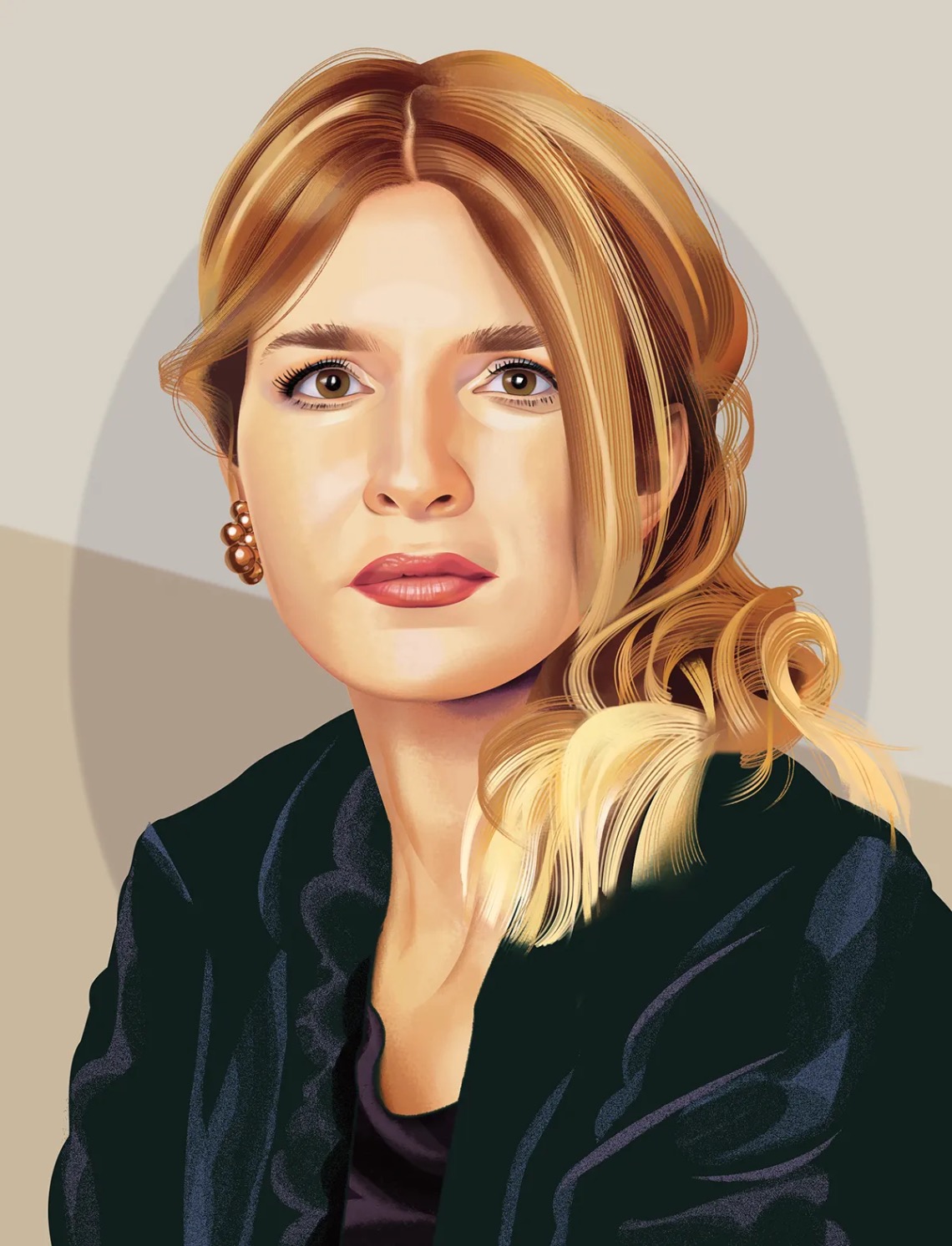
Cartier: Marie-Laure Cérède
“One of my earliest memories of jewellery is a gold ring my parents gave me when I was 8 years old,” says Marie-Laure Cérède, creative director of watches and jewellery at Cartier. “I grew up in Africa, and gold jewellery was a part of everyday life—accessible and beautifully crafted.” Her father worked for the French government in Gabon, and though she lost the ring while swimming in the Atlantic Ocean off the coast of Libreville, she says its twisted golden thread has kept her dreaming of the perfect knot ever since. Of course, one of Cartier’s most recognizable designs is its Trinity ring—three intertwining bands in white, rose, and yellow gold—but Cérède says that, while it’s important to her to allude to Cartier’s history in its present-day collections, she wants to “be inspired by everything but Cartier.”
Her design philosophy certainly seems to be working: Cérède’s pieces simultaneously hark back to the storied house while being wildly imaginative. Take a diamond, onyx, and moonstone brooch (below) that cleverly forms the shape of a claw—a clear reference to the French house’s perennial Panthère mascot—with a single talon lifting open to reveal a secret watch beneath. Meanwhile, a carabiner covered in diamonds and accented with multicolored gems nods to late Cartier designer Aldo Cipullo’s fascination with hardware, while presenting an entirely new way of wearing jewellery; the piece, which also doubles as a clock, is meant to dangle from one’s belt loop.
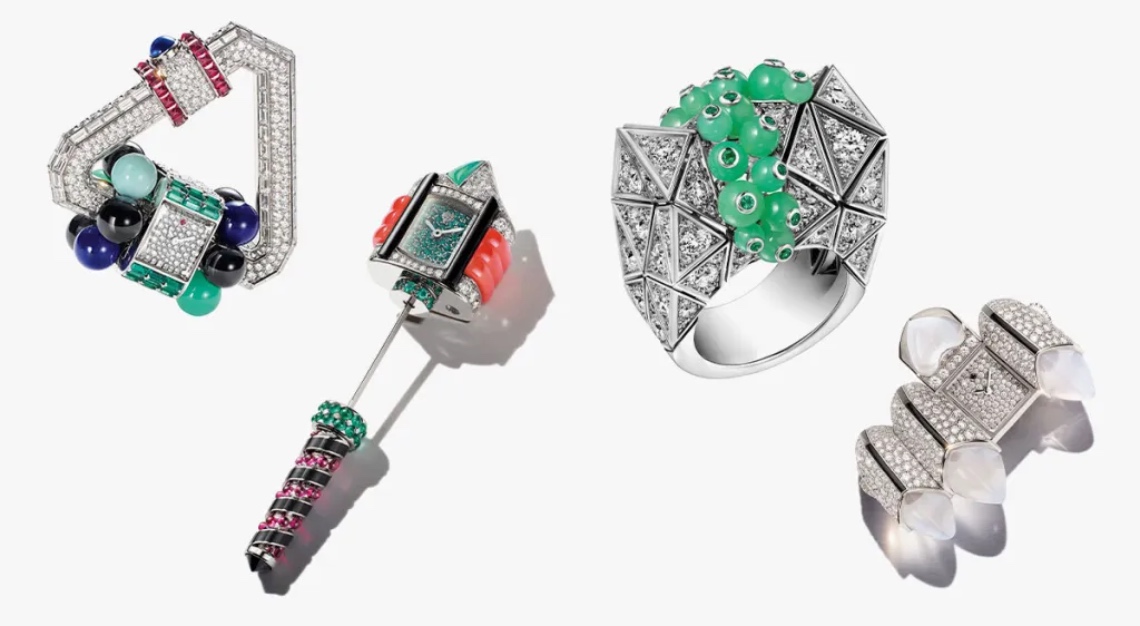
Rethinking how jewellery is worn is a pivotal theme in today’s changing landscape and a trend that’s due as much to our era’s casual dress codes as to its shifting gender norms. “The carabiner could easily be for a woman or a man,” says Cérède, adding that a male buyer attached it to his suit pants for a gala. She also notes that clients are now wearing jewellery not just for special occasions but also in everyday life—and it’s changing how she designs: “We have to think about the volume and the intimacy of the product in relation to the wearer.” This approach is most pointedly reflected in a pair of sunglasses she created for the Cartier Libre Polymorph collection, adorned along the frame and stems with coral, emeralds, diamonds, and onyx. Incredibly, the jewels can transform into a tiara or a pair of earrings. “I think there is a new segment where there’s so much space to do the kind of pieces which are not classic, not only in the design but also in the way they are worn,” she says.
Cérède cut her teeth in both the communications and the creative-product-development sides of the business at Cartier, which could explain her knack for dreaming up pieces that tell a story. Her rise to the top of Cartier’s creative kingdom started out like modern postgrad lore: After receiving a degree in business and marketing from the elite ESCP Business School, she attended a talk by a Cartier executive that so captivated her, she boldly asked for an internship. “That person’s love for jewellery sparked something in me, and I knew I had to be a part of it,” she recalls. Following an almost seven-year stint at Cartier, she spent 12 years at Harry Winston as artistic director before returning to the French house in 2016.
After decades in the industry, Cérède believes it’s the clients that have changed the most. “They have developed a sharper knowledge of jewellery, especially younger generations, partly thanks to social media,” she says. “I see this as very positive, as it makes culture—both iconic and creative—more universal.” It also makes competition much fiercer. Fortunately for Cartier, Cérède is proving that a leopard can indeed change its spots.
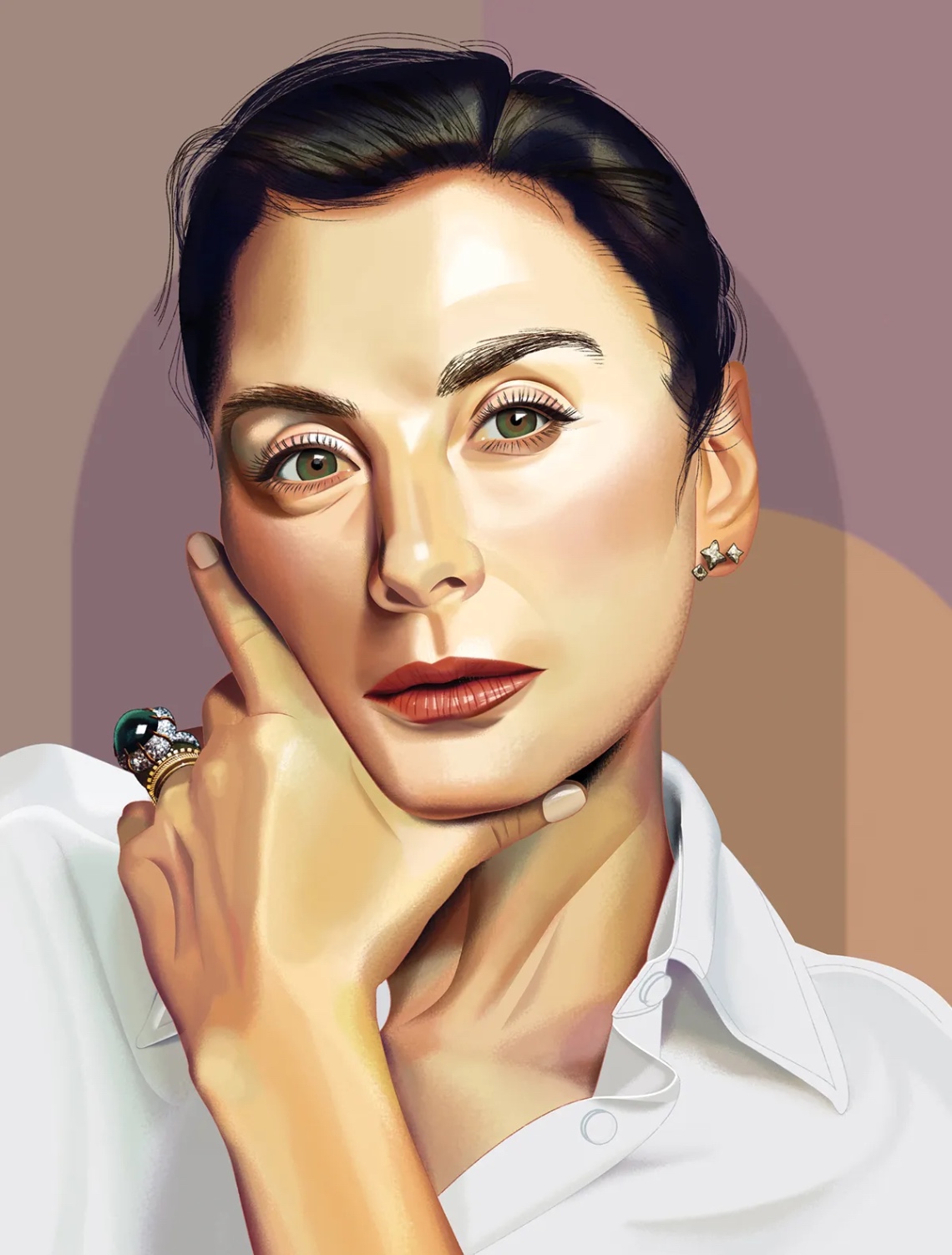
Louis Vuitton: Francesca Amfitheatrof
Francesca Amfitheatrof has an uncanny ability to create a hit. Exactly one year after her 2013 arrival at Tiffany & Co., she launched the hugely successful Tiffany T collection and was responsible for repositioning the Blue Book series to elevate the brand’s status in high jewellery. Her Midas touch soon caught the eye of Bernard Arnault, who poached her to lead Louis Vuitton’s watches and jewellery division as artistic director—a full three years before he would acquire Tiffany for almost US$16 billion. Since 2018, she has been working her magic at Vuitton, deftly weaving its omnipresent monogram into high-impact and technically savvy jewellery that feels simultaneously edgy and regal.
It’s no small feat to make a 128-year-old logo look fresh season after season—particularly in high jewellery, where the monetary stakes are far greater than in clothing or handbags. “I think it is tricky, right?” says Amfitheatrof. “These pieces are meant to be masterpieces that will last forever. And how do you treat them in a way that they are beautiful in their own right, but they become recognizable as Vuitton?” She has achieved that equilibrium by approaching the LV and Fleur de Monogram motifs in a graphic and sculptural way, so that they blend into the architecture of the pieces, balancing minimalism with maximalism—alongside bonafide expertise in metalworking and stones—to create jewellery that feels both serious and fun. Take, for example, the Splendeur necklace: a structural and transformable high collar crafted with a woven mesh of flowers carved in 18-karat yellow gold and set with diamonds and 52 rubies—the largest number ever used on a single piece at the house. With more than 2,400 elements, it required 17 gem setters, 30 jewellers, and 3,217 hours of work.
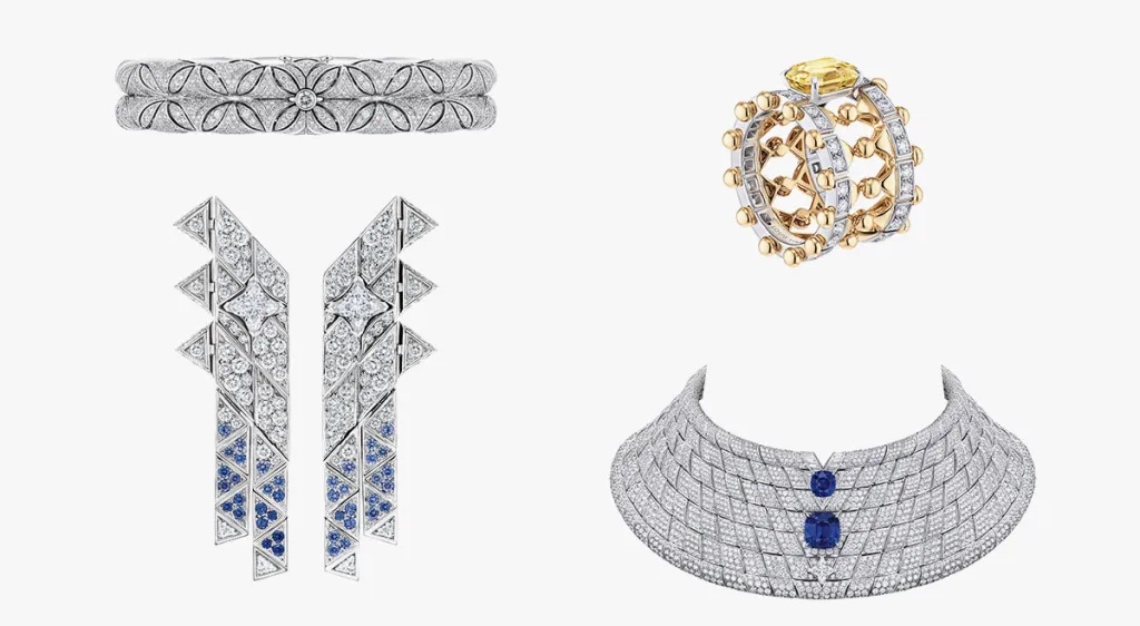
Her ability to tune in to the global zeitgeist could be attributed to her exotic childhood. Born in Tokyo, she spent parts of her youth in New York City, Moscow, and Rome, as well as at boarding school in Kent, England. “My mother is Italian, from Rome, and they are big jewellery wearers—they wear a lot of gold and they’re not shy about wearing jewellery,” says Amfitheatrof, perched on a rooftop against a vivid-blue Mediterranean backdrop in July. Her grandmothers on both sides, she says, also had nice jewellery. Her father, who served as the Moscow bureau chief for Time in the ’80s, had wanted his daughter to attend Harvard, but, she says, “I refused to take my SATs.” After she earned an undergraduate degree from Central Saint Martins and a master’s from the Royal College of Art, a gallery show of her silver vases and jewellery at Jay Jopling’s White Cube gallery led to her exhibiting jewellery at the Parisian trade show Tranoï, where major retailers including Browns in London, Maxfield in L.A., and Colette in Paris all picked up her collection. Soon she was designing jewellery for everyone from Balenciaga to Chanel to Fendi.
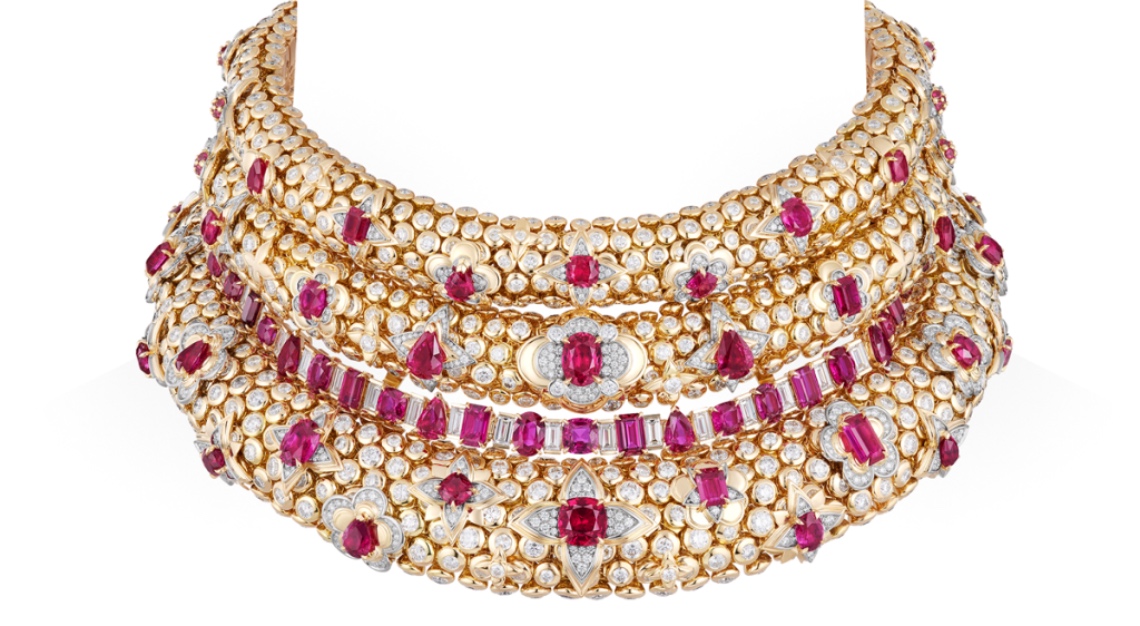
Within the workshops of these powerhouse names, she honed her approach to the craft. “I’ve made jewellery in America, I’ve made jewellery in Italy, and I’ve made jewellery in France,” she says. “Each country has its own traditions, and sometimes you have to push against those to say, ‘No, actually, we want to do it at this thickness,’ or ‘We want to do it at that height,’ or ‘I want the diamonds to have more light on them.’ ” She is said to be meticulous about details—expecting as much rigor from those who work for her as she does from herself. “When I interview my team, if they have a Pinterest board, they’re not going to be the right people,” Amfitheatrof says. “I think that real depth of knowledge comes from studying and from experience. It can’t all come from social media or an app.”

Tiffany & Co.: Nathalie Verdeille
Since joining Tiffany & Co. in 2021, when she was lured by Bernard Arnault from the house’s archrival Cartier, Nathalie Verdeille has preferred to remain behind the scenes. Notoriously press-shy, she has done very few interviews of any kind since being tapped to head creative design for the multibillion-dollar jewellery business acquired by LVMH in 2021. Even after agreeing to participate in this story, she declined to answer any questions about her formative years or how she landed in the industry.
But her work speaks volumes. In just three years, the Parisian designer has elevated the American house’s famous Blue Book collection of high jewellery through painstaking and highly technical work, amping up motifs established by the late Tiffany designer Jean Schlumberger. The famed jeweler’s ornate ’50s and ’60s pieces were favorites of the era’s “ladies who lunch,” but Verdeille and Tiffany have been putting a new spin on the aesthetic by pumping up the architectural volumes and the craftsmanship, as well as the stone selection.
Her riffs on well-known Schlumberger styles add a subtle edge that’s more powerful than prim. A highlight of this year’s Céleste collection, for example, is the Iconic Star necklace, set with free-form sky-blue aquamarines in an unusual array that resembles clouds, punctuated with cerulean-hued zircons and stars fashioned from diamonds and mother-of-pearl. Meanwhile, Verdeille has given Tiffany’s classic Bird on a Rock brooch—recently adopted as red-carpet attire by Robert Downey Jr., Jay-Z, and other sharply dressed men—a serious infusion of funky hues, such as a turquoise-headed bird with a diamond and pearl body perched on a vivid-orange fire opal. “Seeing things differently and pushing that vision to its full potential is crucial for me,” Verdeille says. “Often, a slight variation on a classic can make all the difference and infuse modernity into the design. Anchoring the signature motif in the hearts of those who appreciate our work is crucial.”
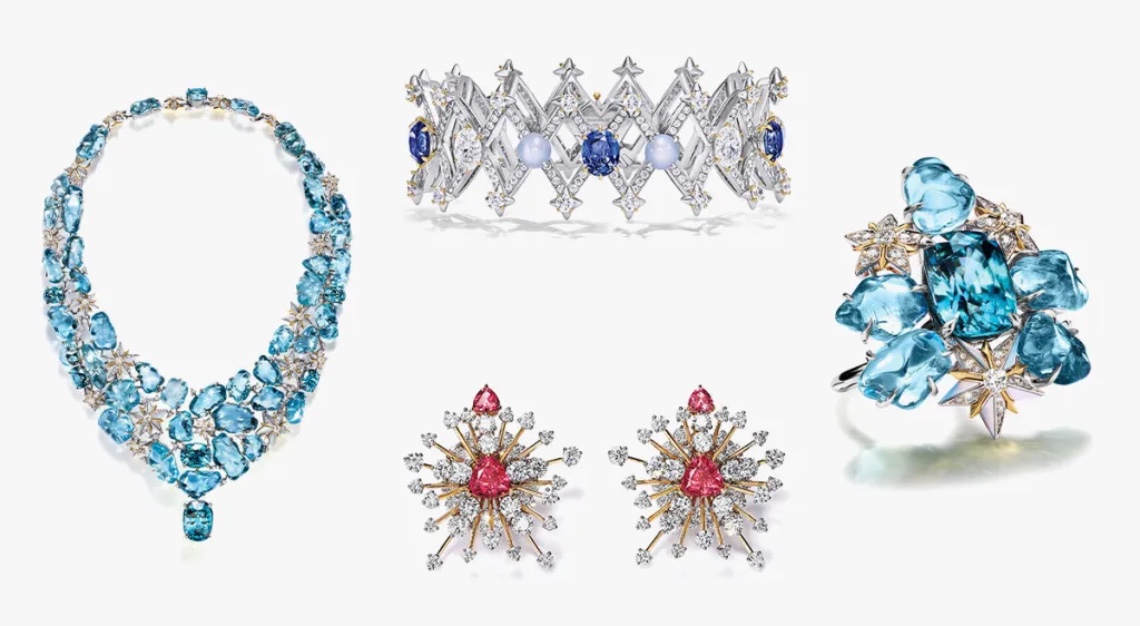
In other words, she’s no stranger to reimagining history. “My way of designing is inspired by the grand fundamentals of jewellery, a practice refined through training with the greats in traditional Parisian jewellery workshops,” she tells Robb Report. After graduating from the Haute École de Joaillerie in Paris in 1997, she went to work for Lorenz Bäumer (who also trained Claire Choisne of Boucheron), helping the independent designer create jewellery for many of the historical brands on the Place Vendôme, the center of high jewellery in the City of Light. She landed briefly at Cartier before heading to Chaumet—a company known for creating jewels, particularly tiaras, for European royalty—for three and a half years. In 2005 she returned to Cartier, where she further sharpened her skills at refreshing centuries-old traditions through challenging craftsmanship, before landing in the US to head America’s crown jewel, Tiffany.
In Verdeille’s case, a revamp doesn’t mean an entirely new visual language, but rather an elevation of workmanship that would have been impossible technically in Schlumberger’s era. Take the Wings necklace from the Céleste collection: It’s visually arresting without looking wildly out-of-the-box. And yet, it’s “among the most complex pieces we have designed,” Verdeille says. Each element of the necklace was crafted individually over 1,732 hours because of its intricate structure, varied diamond shapes, and the difficulty posed by the density, hardness, and high melting point of platinum. Collectors will recognize the wing motif from Schlumberger’s 18-karat-yellow-gold and diamond earrings that mimic the plumes of a bird’s wings, but Verdeille imparts the 2024 Blue Book necklace with high drama that leaves the old version in the dust. She may prefer to remain out of the spotlight, but her high-wattage pieces can’t help but shine.
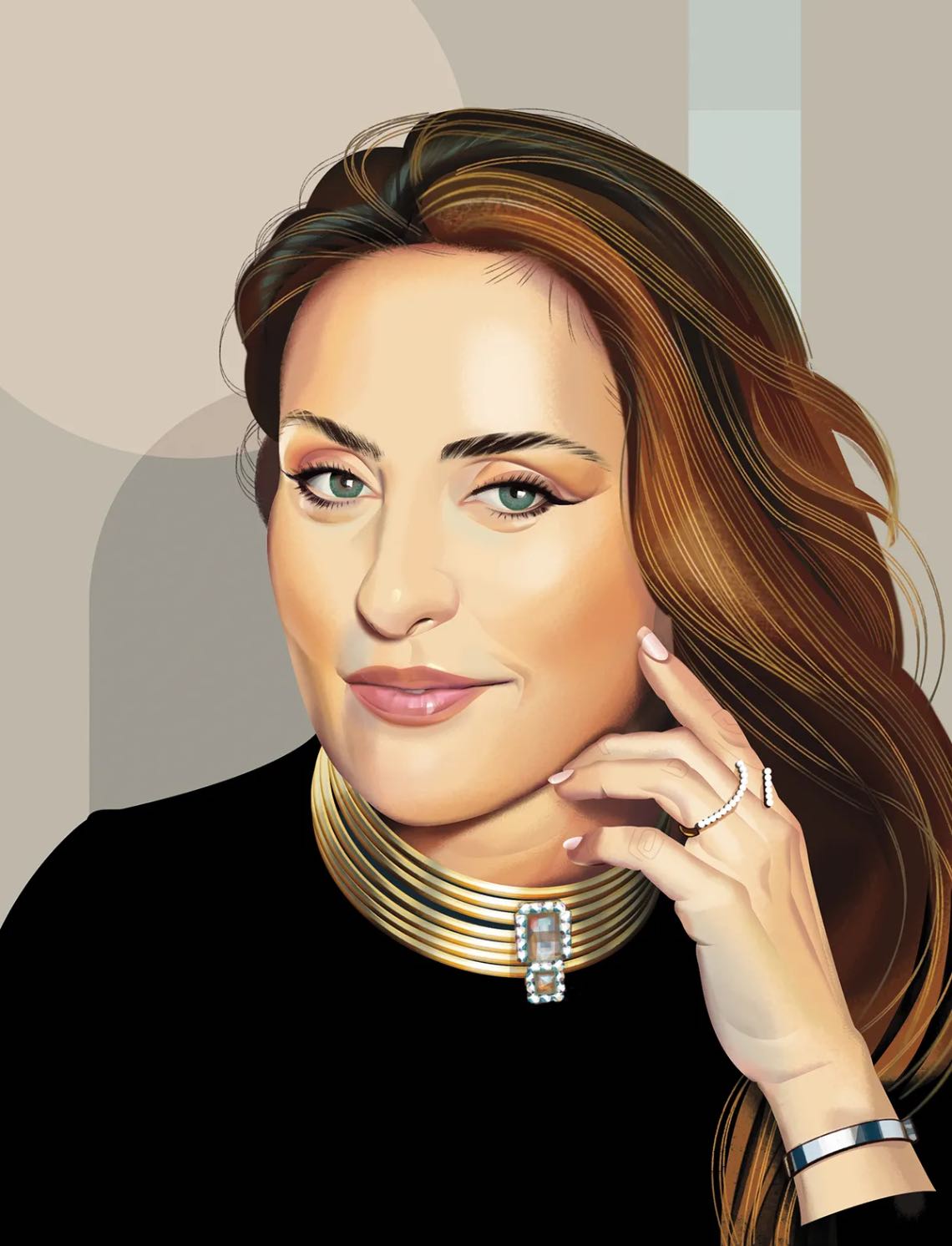
Messika: Valérie Messika
Diamonds are deeply embedded in Valérie Messika’s roots. Her father, André, is a prominent stone dealer who supplies high-quality gems to some of the leading industry houses. But when she fell into the fold of the family business in 2000, she had a different vision: Instead of selling stones to be set by the heritage houses on the Place Vendôme, she wanted to dream up her own, much hipper jewellery.
“At the time, I thought there wasn’t any brand that could speak about diamonds in a cool way, in a very easygoing way for everyday that you can buy for yourself as a woman, not waiting around for an engagement ring,” she says. So, in 2005, still in her mid-20s, she founded her own namesake brand.
Messika set about creating the kind of pieces she wanted to wear. Starting with high fine jewellery, she developed her signature Move collection, based on a diamond-accented oval with a sliding diamond in the center. In 2012 she debuted her first high-jewellery set, which showed off the caliber of stones that made her family a mint in the wholesale business, but in an arena that put the Messika name on a new stage. Recent collections have included everything from a disco-ready choker adorned with an offset 20.04-carat pear-cut yellow diamond next to a 9.07-carat cushion-cut diamond—modeled by former first lady of France Carla Bruni, in 2023—to a collar necklace set with 2,400 snow-set diamonds punctuated by a 3.55-carat pear-shaped yellow diamond and styled on supermodel Natalia Vodianova this year. Forget ball gowns: Vodianova appeared in the ad campaign wearing skintight black PVC leggings, pointed stilettos, and a casual cardigan to echo the necklace’s neo-’80s vibe.
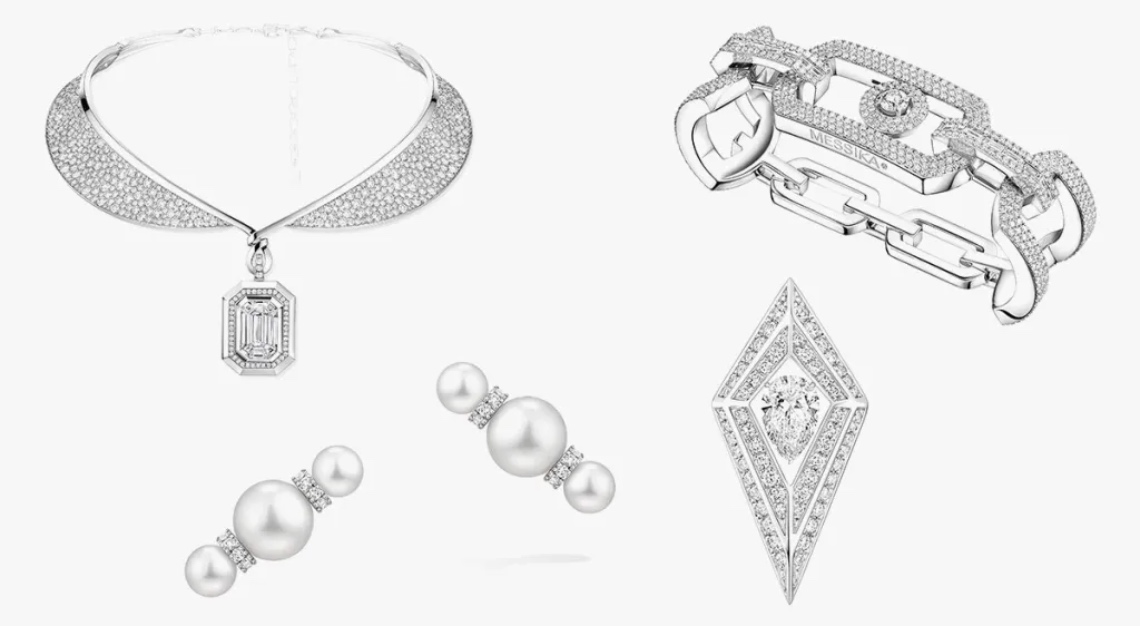
Messika’s penchant for fashion dates to her childhood, when she was enthralled by haute couture; she now gets involved in styling the advertising shoots. “I’m really obsessed by it,” she says. “It’s the perfect balance between the jewellery, the woman, and the outfit.” To that end, she has operated her business more like a high-octane fashion brand than a buttoned-up high-jewellery maison. She has even done collaborations, including two with Gigi Hadid and one with Kate Moss, who lent her bohemian eye to create diamond-encrusted headpieces, arm bracelets, and anklets.
But the name is catching on beyond paid endorsements. It seems that every cool girl in Paris has been seen in a Move bracelet, and celebrities from Rihanna to Irina Shayk have chosen to wear the high jewellery on the red carpet. Some are clients. (Beyoncé owns a custom-made choker with a 17-carat pear-shaped diamond from the French house.) Much of the fandom can be equally attributed to the modern designs and to Messika’s own exuberant personality. Now, with flagships in Los Angeles, Miami, and New York City, she has set her sights on conquering the US market. “We have so many other steps to reach, because it’s a giant market,” Messika says. “But I can definitely feel that it’s our time. If we press the button, the market is ready to open, to be open to a newcomer in jewellery and high jewellery like us.” Consider it the Messika movement, in full swing.
Previously published on Robb Report USA.
Featured photo by Boucheron
Photography by Cartier, Tiffany & Co., Messika, Louis Vuitton
Illustrations of women by Nigel Buchanan and Tiffany & Co.




